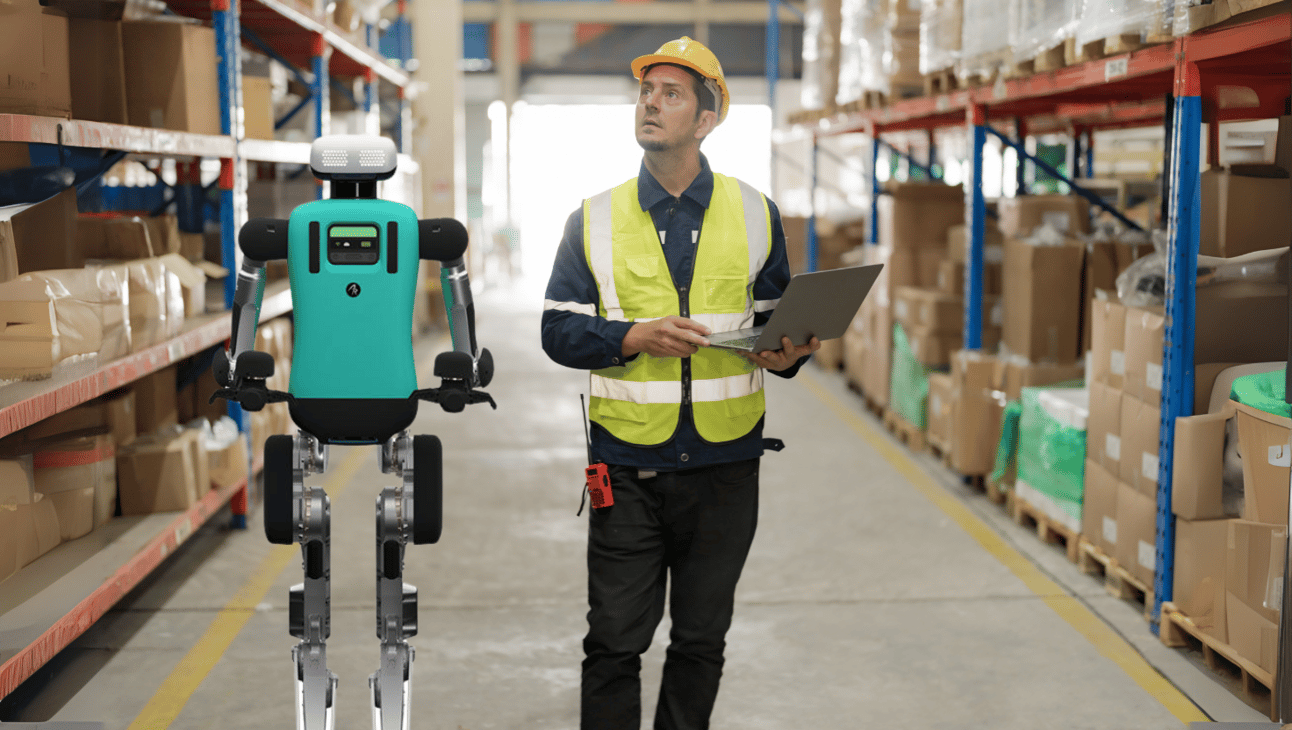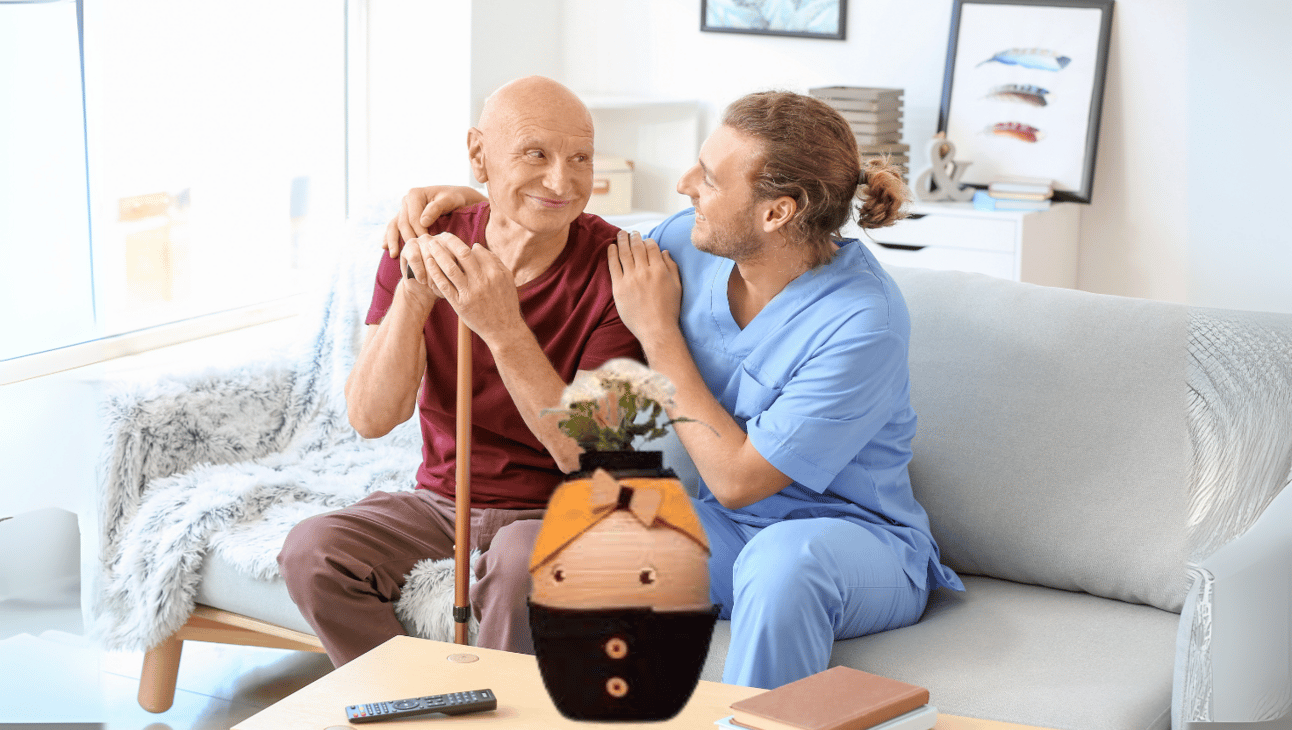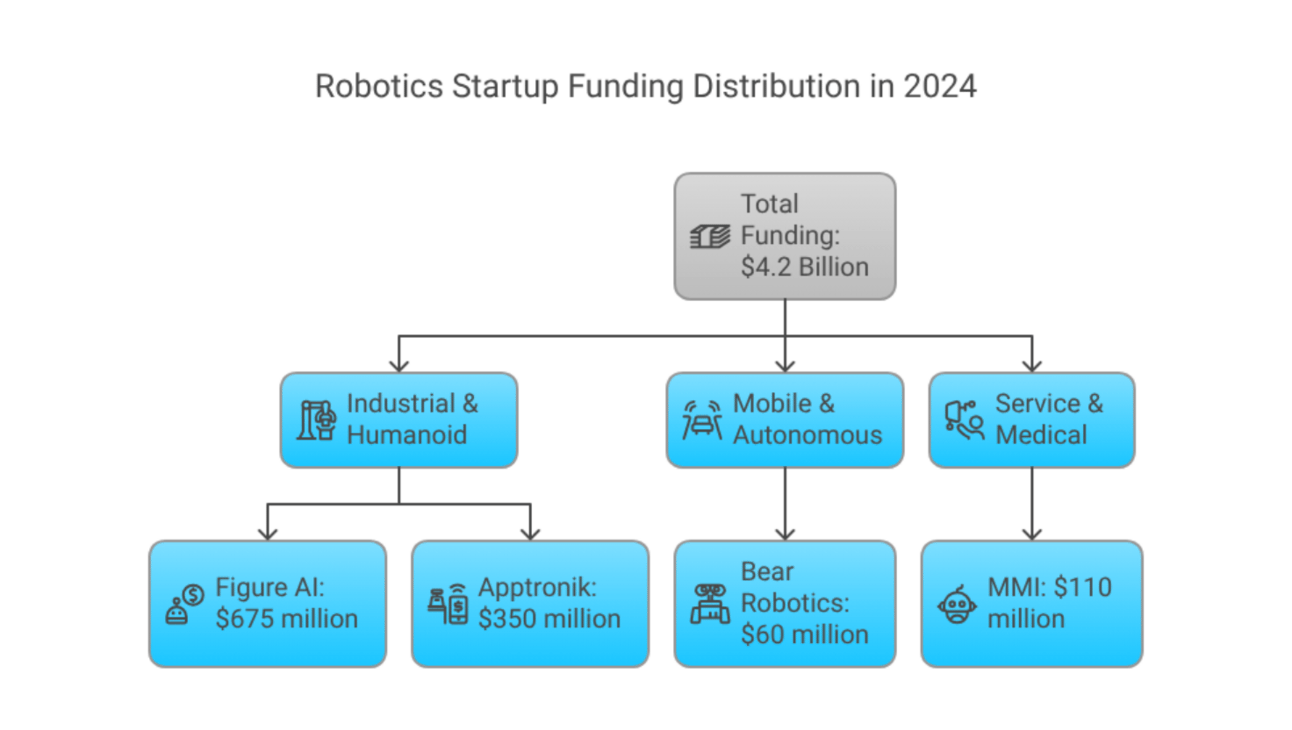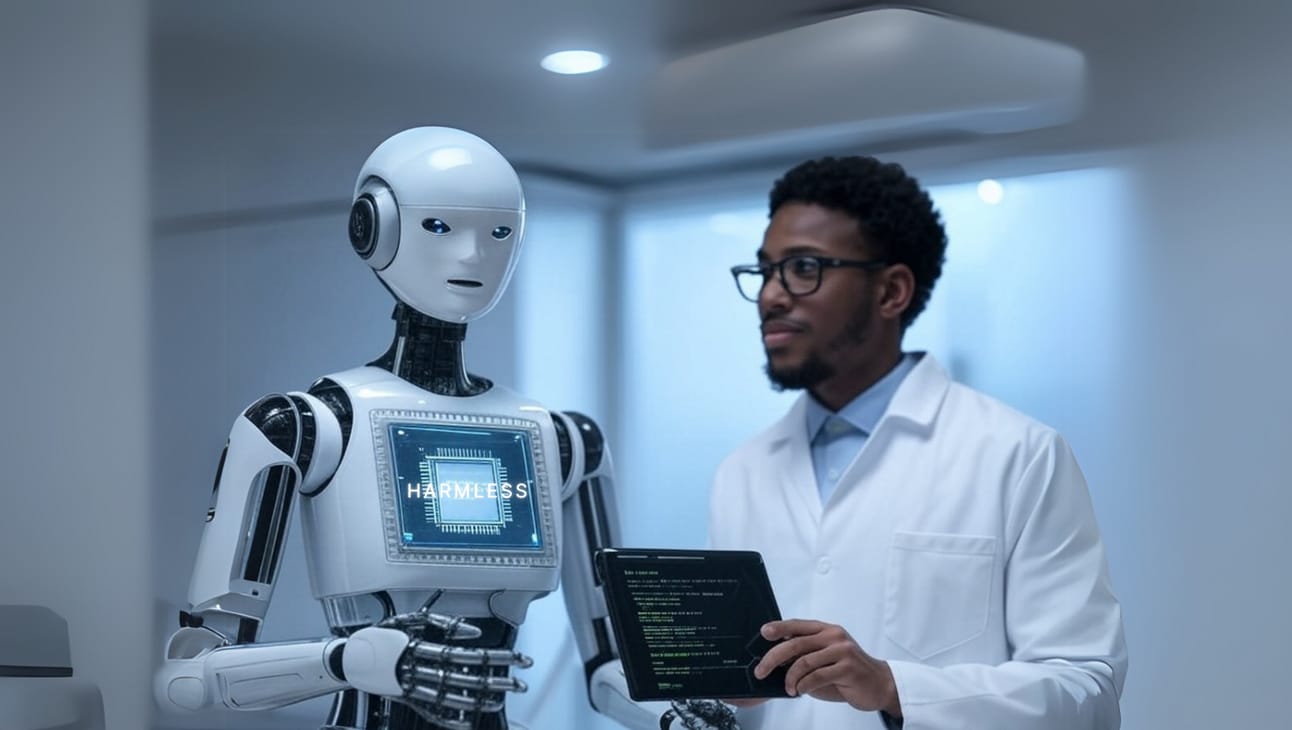Noon Shift, Warehouse 74 Maria slips a fresh pair of steel-toe boots over aching feet, taps her ID badge, and eyes the newcomer at lane 3—a metal figure with turquoise panels and blinking status lights. "Digit," the floor lead calls it, "never needs a smoke break and lifts sixty-pound totes without a grunt."
Five minutes later, Maria’s handheld scanner beeps: shadow the robot, verify picks, record mis-grabs. Each time Digit pivots, she flinches, wondering whether its vision system really sees her. She likes the idea of fewer back strains. She dislikes the cold calculus that decides which jobs the machines absorb next. Ethics, for her, is the question whispered at the end of every shift: "Will Digit have my badge number tomorrow?"
When Code Steps Off the Screen The warehouse floor on the outskirts of Seattle no longer hums only with forklifts. A five-foot-nine biped named Digit moves past stacked totes, guided by 3D sensors and smart software trained to navigate its surroundings. The arrival of robots that operate in human space has turned a decade of abstract alignment debates into a matter of workplace safety. A chatbot might bruise feelings; a misaligned robot arm can cause serious injury. Humanoid deployments climbed sharply this quarter as investors poured more than $1.2 billion into the sector last year, with projections suggesting that figure could double in 2025.

From Pilot to Production Agility Robotics is negotiating a $400 million investment to scale Digit production to 10,000 units a year for Amazon’s logistics network. Apptronik’s Apollo is already working in GXO facilities, adjusting its movements in real time to safely operate near people. Canada’s Sanctuary AI delivered its sixth-generation Phoenix robot to Magna for precise assembly using a streamlined software system. Figure AI, having raised $1.5 billion, recently shifted away from OpenAI to build its own custom models—arguing that fully integrated systems are essential for robots to learn effectively from the world around them. The autonomy race is accelerating, but the gap between flashy demos and proven safety remains wide.
The Ethics Ledger: Fewer Crushed Backs, More Sprained Wrists Robot makers highlight fewer severe injuries when machines handle heavy lifting—one study showed a 40% drop. Yet that same data set revealed a 77% rise in minor injuries as human roles shifted to quicker, more detailed tasks. In the UK, unions recorded 119 serious incidents at Amazon sites since 2019, despite the company’s $750 million investment in safety and growing use of mobile robots. Fatal accidents remain rare, but OSHA noted two cases last year involving workers crushed by robotic arms. Progress is real, but new risks emerge. Alignment, in this context, is constantly evolving.
A Turning Point in Law Europe’s AI Act now classifies warehouse robots as "high risk" systems, requiring ongoing safety monitoring. Manufacturers must release transparency reports, keep detailed logs, and provide regulators with access to their software. These requirements begin in August 2025. The law demands more than promises—it asks for clear proof of safety systems, the origin of AI models, and emergency override procedures. Meanwhile, in Washington, lawmakers are reviewing whether similar language should be added to OSHA regulations.
Updating Asimov’s Canon Ethicists are revising the old rules. Isaac Asimov’s famous laws didn’t foresee digital deception or data misuse. A proposed new rule: robots must not manipulate human emotions or exploit psychological vulnerabilities. For example, elder-care robots in Japan designed to comfort patients have been found nudging users toward brand loyalty or collecting sensitive data without clear consent. As Japan’s caregiver workforce shrinks by 9.3% over the next decade, such devices are becoming more common.

Alignment In the Loop Leading robotics labs use human feedback to fine-tune robot behaviors, but mechanical goals—like "grasp this object"—rarely capture ethical nuance. Researchers now combine written rules with AI that learns from real-world data. Figure AI, for example, includes rule-checking systems within its core AI engine. Apollo logs sensor data and sends it to independent safety reviewers. Some European insurers now offer lower rates to companies that prove their robots meet formal safety standards or undergo outside safety testing.
The Road Ahead Ethics in robotics will be shaped in warehouses, factories, and care homes. Four key principles are emerging:
Clear objectives – Define tasks in a way machines can check and humans can verify on-site.
Informed consent – Make sure people know when data is being collected.
Phased autonomy – Only allow robots to do more once they’ve passed risk tests.
Human dignity – Judge success not just by output, but by how workers are treated.
Where The Money Flows Crunchbase reported $4.2 billion in robotics startup funding during 2024. Investments clustered in three areas:
Industrial & humanoid robots – $1.6 billion (38%) Figure AI’s $675 million Series B and Apptronik’s $350 million round led this group, with tech companies, insurers, and logistics firms among the investors.
Mobile & autonomous robots – $1.3 billion (30%) Bear Robotics raised $60 million for its robotic servers. Other deals focused on robots for cleaning and agriculture.
Service & medical robots – $1.2 billion (28%) Companies like MMI (microsurgery tools), RLWRLD (care companions), and pharmacy automation startups raised eight-figure sums.

January saw $578 million in funding across 46 deals. In October, robotics software megadeals pushed monthly totals past $7 billion. Statista forecasts global robotics revenue of $50.8 billion for 2025, with service robots bringing in 80% of that—showing that investors are chasing real, growing markets.
Nordic Pilot: Can Social Robots Scale Elder Care? Finland tested Zora, a child-sized robot, in elder-care centers over three years. Staff liked Zora’s ability to lead group exercises and engage residents, but noted its technical fragility and battery issues. Denmark tried Tessa, a voice-enabled reminder system shaped like a flowerpot, which helped reduce missed medications and slightly improved mood scores. Sweden expanded use of Giraff, a telepresence robot for home care, and reported 23% fewer emergency calls when nurses used it for nighttime check-ins.
The takeaway: social robots work best when they fit into existing routines, have reliable support staff, and assist rather than replace human caregivers. Nordic results are promising—but scaling up will require better maintenance systems and strong privacy protections.
Calibrating Conscience at Scale Robots now walk factory aisles, hospital corridors, and elder-care wards. Ethics lives not in theory, but in firmware updates, audit trails, and the commitment of teams who won’t ship until their safety checks pass. The future belongs to those who treat ethical reliability as seriously as hardware reliability. When the first billion robots go to work, their behavior will echo the decisions we make this year.

Every episode of Dylan Curious ends with a question: What kind of future do we want? Today, that question has a clearer answer: one where steel bodies run on moral code as faithfully as motion control. One where every new line of code remembers the old rule of medicine: first, do no harm. And one where the people who build these machines stay accountable—long after the launch announcement fades.

Dylan Jorgensen
Dylan Jorgensen is an AI enthusiast and self-proclaimed professional futurist. He began his career as the Chief Technology Officer at a small software startup, where the team had more job titles than employees. He later joined Zappos, an Amazon company, immersing himself in organizational science, customer service, and unique company traditions. Inspired by a pivotal moment, he transitioned to creating content and launched the YouTube channel “Dylan Curious,” aiming to demystify AI concepts for a broad audience.
Sources:
Madeline Stone, “Humanoid robots are coming to a warehouse near you,” Business Insider, Apr 18 2025. Business Insider
Kurt Schlosser, “Agility Robotics reportedly raising $400 M for humanoid warehouse robots,” GeekWire, Apr 1 2025. GeekWire
“Apollo humanoid robot in tests by Apptronik and GXO,” The Robot Report, Jun 20 2024. The Robot Report
Brian Heater, “Figure drops OpenAI in favor of in‑house models,” TechCrunch, Feb 4 2025. TechCrunch
“EU AI Act: first regulation on artificial intelligence,” European Parliament, updated Feb 19 2025. European Parliament
Dariusz Jemielniak, “Asimov’s Laws of Robotics Need an Update for AI,” IEEE Spectrum, Jan 14 2025. IEEE Spectrum
StrongArm Tech blog, “Workplace Safety in Automated Warehouses,” 2024. SafeWork
“Dozens of UK Amazon workers suffer serious injuries…,” Financial Times, Jan 2025. Financial Times
OSHA Accident Search database, fatal robot incidents, 2024. OSHA
“Aging Japan turns to AI robots to care for older people,” ABS‑CBN News, Feb 28 2025. ABS-CBN
Joanna Glasner, “Robotics Startups on the Rise in 2024,” Crunchbase News, Jun 27 2024. Crunchbase News
Dan Kara, “Robotics companies raised $578M in January 2024,” The Robot Report, Mar 6 2024. The Robot Report
“Investment in robotics keeps booming,” LinkedIn post by P. Ziegler, Feb 2025. LinkedIn
Statista Market Outlook, “Robotics – Worldwide,” accessed Apr 18 2025. Statista
Satu Pekkarinen et al., “Towards Technology Domestication in a Care Organization,” Intl. Journal of Social Robotics, Mar 4 2025. SpringerLink
Daniel Ciolek, “Tessa the Talking Flowerpot Robot and Innovation in Long Term Care,” Provider Magazine, Sept 11 2024. providermagazine.com
“Telepresence Robots: Giraff Technologies,” telepresencerobots.com, accessed Apr 18 2025. Telepresence Robots

